By: Tom Moran, Alaska NSF EPSCoR, Communications Manager
Alaska National Science Foundation (NSF) Established Program to Stimulate Competitive Research (Alaska NSF EPSCoR) is a program to improve Alaska's scientific capacity by engaging in research projects supported through NSF and state funds. It's one of 26 states and territories that take part in the national EPSCoR program, which was created by Congress to improve research competitiveness in areas that have traditionally received small amounts of NSF funding.
Alaska NSF EPSCoR recently concluded a six-year project entitled "Alaska Adapting to Changing Environments (Alaska ACE)." The project organized regional "test cases" in Juneau, the Kenai Peninsula, and the Arctic village of Nuiqsut in order to examine the capacity of different Northern communities to adapt to change. A key element of the project was directly engaging with community stakeholders to help shape the direction of the research, and to ensure that research outcomes met local needs. A new report, "Sharing Questions, Sharing Answers," details the strategies used by different parts of the project to engage stakeholders, and lessons learned along the way. (Download the full report from the Alaska EPSCoR website.)
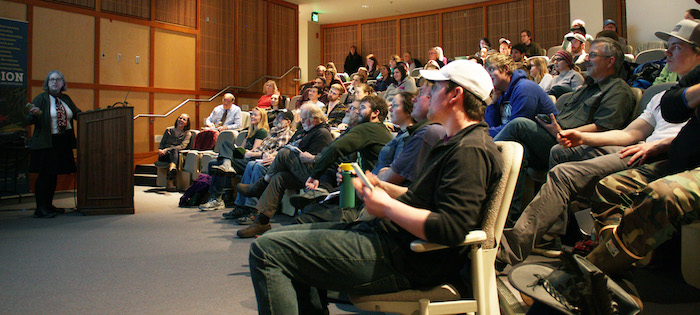
The program's Southeast Test Case focused on changes to ecosystem services brought on by glacial recession in Berners Bay, near Juneau. In this test case, researchers initially planned to provide Juneau-area land and resource managers with data on environmental changes to aid in their decision-making, but scientists switched gears after concluding that managers lacked agency to take prompt action based on findings. They instead focused on nature-based tour operators, who had more immediate use for the research for purposes such as picking safe helicopter landing spots on glaciers, or tracking wildlife in changing ocean conditions. Primary engagement methods included a pair of large-scale research symposia for tour guides, as well as glossy newsletters and an award-winning poster that were designed to educate both guides and some of the roughly one million visitors Juneau receives each year.

The Southcentral Test Case examined the effects of hydrological and landscape changes on communities in the Kenai River watershed. In this test case, researchers actively engaged with Kenai Peninsula organizations, including jointly collecting stream data with the Kenai Watershed Forum, partnering on outreach events with the Kachemak Bay National Estuarine Research Reserve in Homer, and conducting multiple projects with the Kenaitze Indian Tribe. The cornerstone of test case outreach was "Salmon 2050," in which researchers hosted area natural resource managers for a pair of interactive workshops focused on the future of the Kenai in general, and its salmon fisheries in particular. Participants' input was then combined with test case data to produce five scenarios of the future of the Kenai, each based on different uncertainties and management decisions. Researchers met directly with local organizations to share results. These results are also shared via a website that contains workshop summaries, scenario descriptions, maps, artwork, and videos.
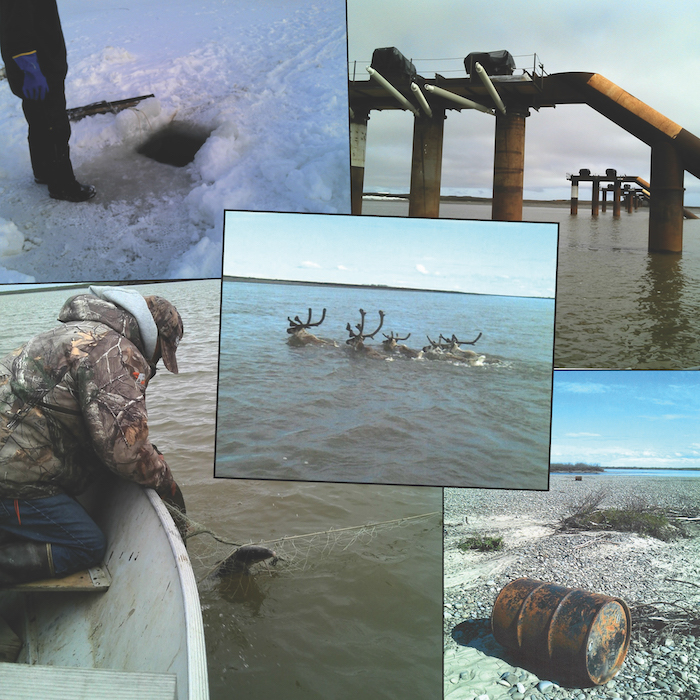
The Northern Test Case studied how climate change and resource development affect subsistence resources around the North Slope village of Nuiqsut. In this test case, researchers issued camera-equipped GPS devices to local hunters and asked them to document and take photos of environmental change. Their feedback resulted in two key research projects—one on aircraft noise, the other on river navigability—that directly addressed local concerns. Another important engagement tool was a pair of workshops, one in Fairbanks and the other in Nuiqsut, that brought researchers together with local residents and leaders for an open conversation about the impacts of landscape change in the Nuiqsut area and ways for residents to potentially adapt.
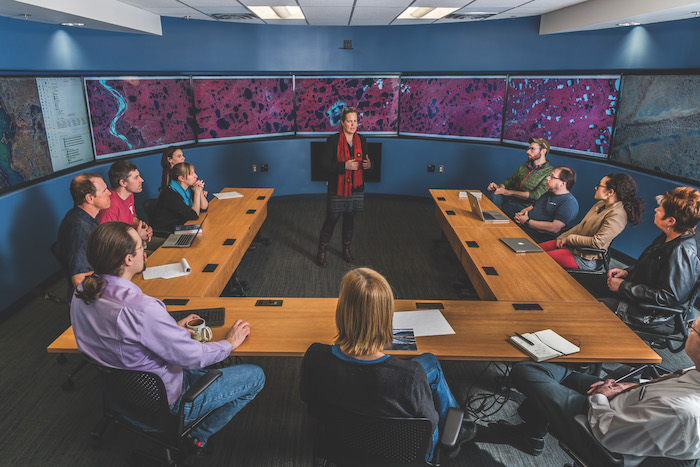
The "Sharing Questions, Sharing Answers" report also describes stakeholder engagement efforts by the project's statewide synthesis and education components. One key initiative was creating Vis Space, a high-tech visualization room on the University of Alaska Fairbanks (UAF) campus designed to aid in decision-making. Online portals were also created to make ACE data accessible to the public. Education efforts served as a key link to test case areas, and included both a traveling "augmented-reality sandbox" used to teach about topography and hydrology; and the Global Learning and Observations to Benefit the Environment (GLOBE) teacher training program, which showed instructors ways to engage primary and secondary school (K-12) students in scientific research.
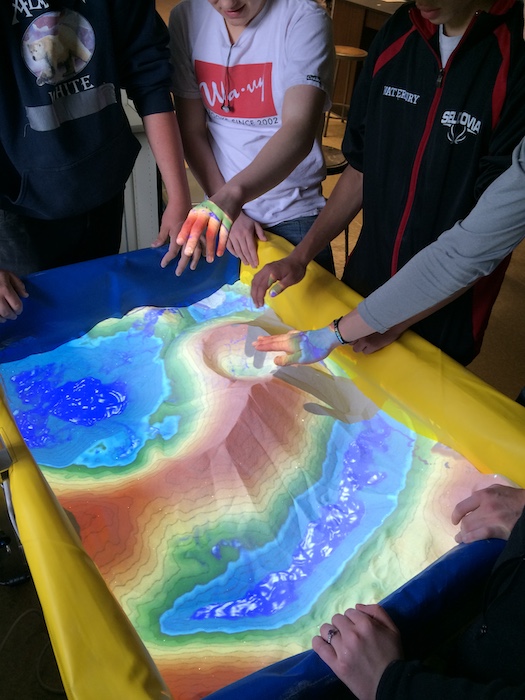
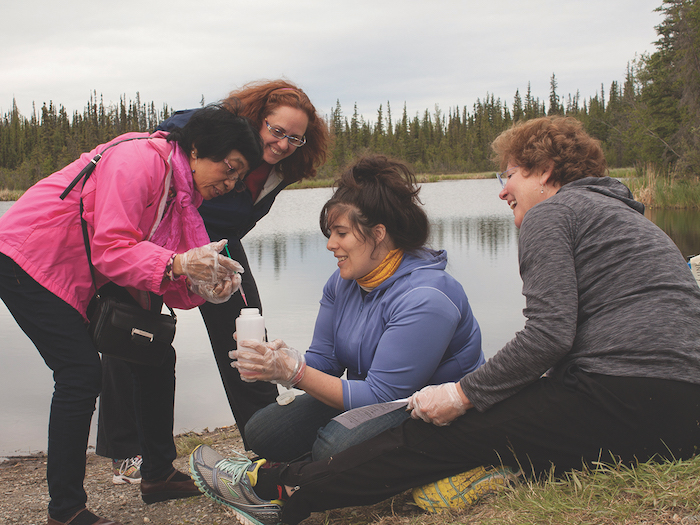
The report concludes with 10 recommendations for future researchers. Among the most significant: test case leads all agreed that projects often put the cart before the horse, originating research questions then bringing them to communities. They said research is far more effective when stakeholders are consulted first, and research questions are devised based on their input.
Other key recommendations: (1) researchers should do advance work to pinpoint which stakeholders are most likely to contribute to—and benefit from—findings; (2) a narrow research focus will help ensure a productive project; (3) there is no substitute for face-to-face contact with stakeholders, even if that means difficult travel; and (4) communities are more receptive to research proposals when they include an element of education for local students or residents.
The report was prepared by communications staff at the Alaska NSF EPSCoR office, based on internal records, interviews with project leaders and stakeholders, participant surveys, researchers' academic articles, external evaluations of the program, and a pair of reports prepared by UAF graduate students under the tutelage of UAF faculty member Sarah Trainor, who was hired through the ACE program. Funding for the report came from Alaska EPSCoR NSF award #OIA-1208927 and the State of Alaska. The "Sharing Questions, Sharing Answers" report is available to download as a PDF.
About the Author
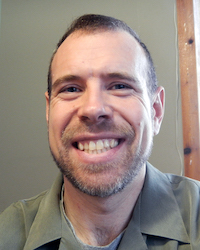 Tom Moran holds a BA from the University of Notre Dame and an MFA from the University of Alaska Fairbanks. He has been with Alaska NSF EPSCoR since 2007 and currently works as the organization's Communications Manager.
Tom Moran holds a BA from the University of Notre Dame and an MFA from the University of Alaska Fairbanks. He has been with Alaska NSF EPSCoR since 2007 and currently works as the organization's Communications Manager.
